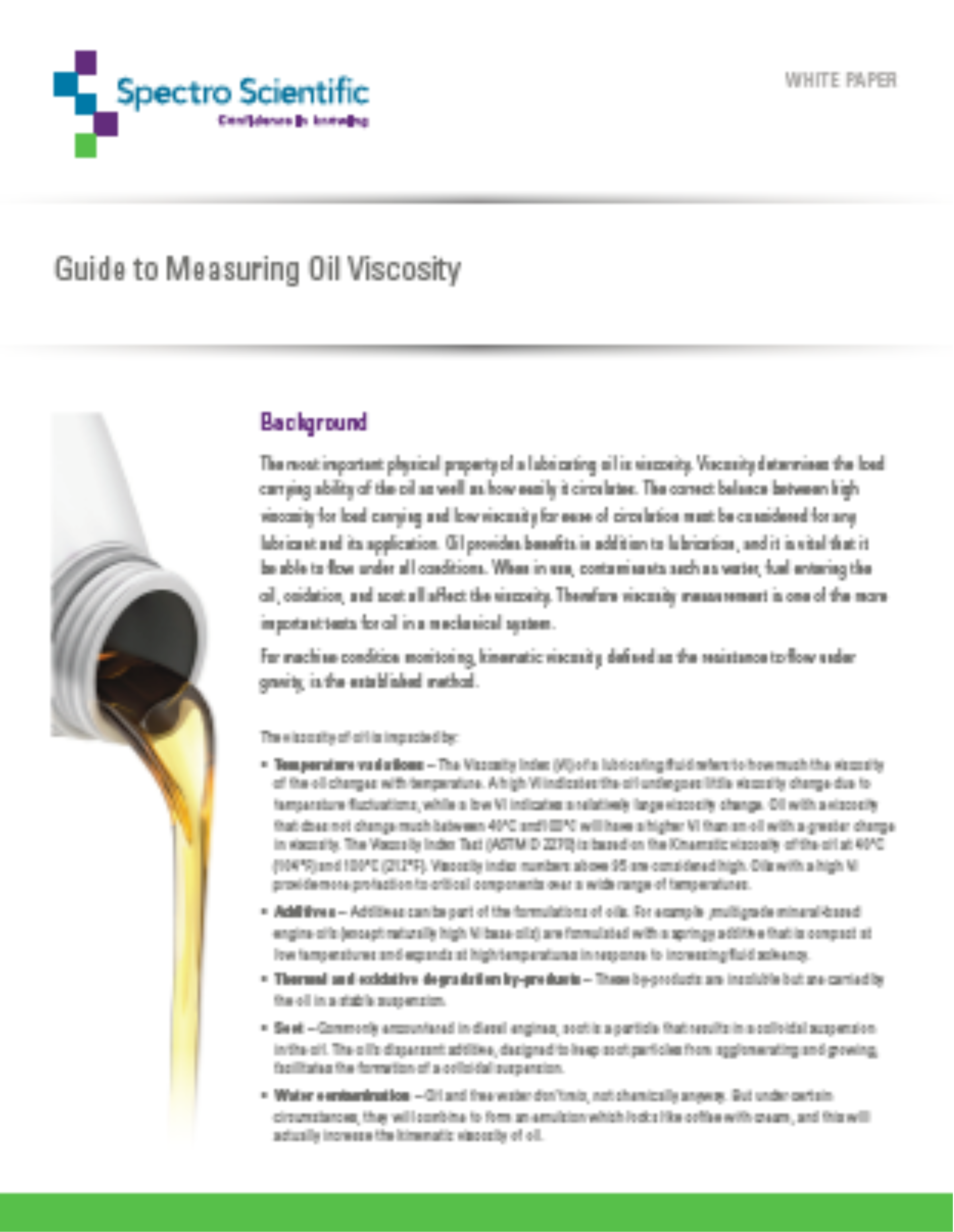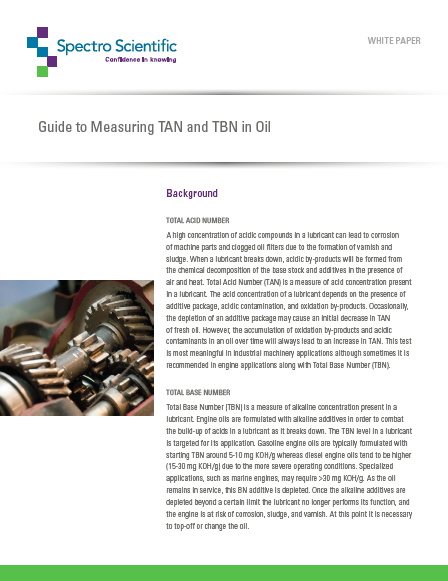The most important physical property of a lubricating oil is viscosity. It determines the load carrying ability of the oil as well as how easily it circulates. The correct balance between high viscosity for load carrying and low viscosity for ease of circulation must be considered for any lubricant and its application. Oil provides benefits in addition to lubrication, and it is vital that it be able to flow under all conditions. When in use, contaminants such as water, fuel entering the oil, oxidation, and soot all affect the viscosity. Therefore viscosity measurement is one of the more important tests for oil in a mechanical system. For machine condition monitoring, kinematic viscosity, defined as the resistance to flow under gravity, is the established method.
Monitoring TAN and TBN is an important test for measuring lubricant condition. There
are several methods available ranging from expensive laboratory methods to quick field
tests. In a laboratory setting, methods are chosen based on the highest accuracy and
repeatability that can be achieved with a decent throughput. Out in the field, it is most
important to get a trustworthy result quickly enough that preventative or corrective
maintenance action can be taken before major equipment failure. The best method to
use depends on the application need.
0 Comments Click here to read/write comments



